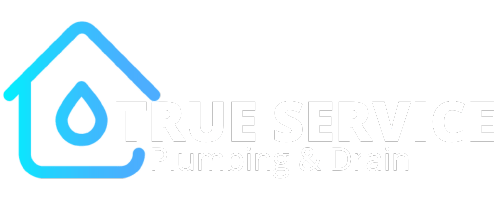If you’re considering upgrading your home’s plumbing system, you might be wondering, what is CPVC?
Chlorinated Polyvinyl Chloride (CPVC) is a popular choice for homeowners due to its durability, heat resistance, and cost-effectiveness.
But is it the right choice for your plumbing needs?
In this guide, we’ll break down everything you need to know, from how it compares to other materials to its benefits, installation process, and common issues.
By the end, you’ll have a clear understanding of whether CPVC is the right fit for your home.
What is CPVC and How Does It Work?
C-PVC is a thermoplastic material that is chemically altered to withstand higher temperatures and increased water pressure.
Unlike regular PVC, C-PVC undergoes a chlorination process that enhances its resistance to heat and corrosion, making it ideal for both hot and cold water lines.
Key Properties:
- Can handle temperatures up to 200°F (93°C)
- Resistant to corrosion and chemical damage
- Long-lasting with a lifespan of up to 50 years
- Smooth interior prevents mineral buildup
CPVC vs. PVC: What’s the Difference?
Many homeowners assume that C-PVC and PVC are the same, but they have critical differences:
Temperature Resistance: C-PVC can handle temperatures up to 200°F, whereas PVC is limited to 140°F.
Corrosion Resistance: C-PVC is more resistant to chemicals and corrosion, making it ideal for hot water lines.
Flexibility: -PVC is slightly more flexible than PVC, reducing the risk of cracking under pressure.
Application: C-PVC is used for hot and cold water supply, whereas PVC is typically limited to cold water applications.
If your plumbing system needs to transport hot water, C-PVC is a far better choice than regular PVC.
Who Should Consider Using CPVC?
C-PVC is an excellent choice for:
- Homeowners looking for a cost-effective alternative to copper.
- Plumbers working on residential and commercial buildings.
- People living in areas with high chlorine levels in water.
- Those needing a long-lasting solution for both hot and cold water lines.
When is CPVC the Right Choice?
C-PVC is best used in:
- Indoor residential plumbing systems (bathrooms, kitchens, and water heaters).
- Commercial buildings where high water temperatures are needed.
- Industrial settings that require chemical-resistant piping.
- Fire sprinkler systems due to its heat resistance.
When Should You Avoid CPVC?
- Outdoor plumbing systems (C-PVC is not UV-resistant and can degrade over time).
- Compressed air systems (C-PVC is not designed to handle air pressure).
- Extreme cold climates (it can become brittle if exposed to freezing temperatures).
Where is CPVC Commonly Installed?
C-PVC is widely used in:
- Residential water supply lines
- Commercial buildings
- Hotels and apartment complexes
- Fire protection systems
- Industrial applications (chemical handling)
What Are the Benefits of CPVC Pipes?
Homeowners and plumbing professionals favor C-PVC due to its many advantages:
Durability & Long Lifespan
C-PVC pipes can last up to 50 years with proper installation and maintenance.
Heat & Pressure Resistance
Unlike PVC, C-PVC handles hot water effectively, making it ideal for household plumbing.
Corrosion Resistance
C-PVC doesn’t rust or corrode, unlike copper or galvanized steel pipes.
Cost-Effective
More affordable than copper, with lower installation and material costs.
Smooth Interior Prevents Buildup
Reduces mineral deposits and blockages, keeping water flowing efficiently.
What Are the Disadvantages of CPVC?
Although C-PVC is a great option, it does have some drawbacks:
Brittleness Over Time
Exposure to extreme cold or improper handling can cause C-PVC pipes to crack.
Requires Solvent Cement for Installation
Unlike PEX, C-PVC cannot use push-to-connect fittings; it needs specialized solvent cement.
Not UV-Resistant
If installed outdoors, C-PVC needs UV protection to prevent degradation.
How to Install CPVC Pipes
If you’re planning a DIY installation or hiring a plumber, here are the steps to install C–PVC pipes properly:
Step 1: Measure & Cut the Pipes
Use a pipe cutter or fine-tooth saw for precise cuts.
Step 2: Smooth the Edges
Remove burrs to prevent damage to fittings.
Step 3: Apply CPVC Primer & Solvent Cement
- Use C-PVC-specific primer and glue to create a leak-proof connection.
- Allow joints to cure before turning on the water.
Step 4: Test for Leaks
Once installed, run water through the system and check for any leaks.
How Does CPVC Compare to Other Plumbing Materials?
- C–PVC vs. PEX: C-PVC is rigid, while PEX is flexible and easier to install. However, C-PVC has better heat resistance and longevity.
- C-PVC vs. Copper: C-PVC is much cheaper than copper, does not corrode, and is easier to work with. Copper, however, lasts longer and is more durable.
- C-PVC vs. PVC: C-PVC can handle hot water, whereas PVC is only suitable for cold water applications.
Common CPVC Plumbing Issues & Solutions
1. Leaking Joints?
Ensure proper application of solvent cement and allow curing time.
2. Pipes Turning Brittle?
Avoid installing C-PVC in freezing conditions.
3. Low Water Pressure?
Check for blockages or improper pipe sizing.
Conclusion: Is CPVC Right for Your Home?
C-PVC is a reliable, cost-effective, and durable choice for homeowners looking for a long-term plumbing solution.
Whether you’re replacing old pipes or installing a new system, C-PVC is a great option for hot and cold water lines.
If you’re unsure whether C-PVC is right for your home, consulting with a professional plumber can help you make the best decision.
CPVC Plumbing Solutions with True Service Plumbing
When it comes to C-PVC plumbing installations in Toronto and the GTA, True Service Plumbing is your trusted choice for residential and commercial plumbing solutions.
Our expert team ensures efficient and high-quality service, from new installations to repairs and maintenance.
Need reliable plumbing assistance?
Contact True Service Plumbing today for expert solutions tailored to your needs.
Let’s keep your plumbing system flowing smoothly!


